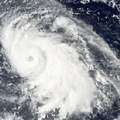 一項5日發表的研究報告指出,亞洲的空氣污染越來越嚴重,導致整個太平洋雲層及風暴增強,進而影響到全球氣候狀況。這項研究發現對於北極地區更為不利,作者表示,太平洋風暴增強也將加快北極的暖化速度。
一項5日發表的研究報告指出,亞洲的空氣污染越來越嚴重,導致整個太平洋雲層及風暴增強,進而影響到全球氣候狀況。這項研究發現對於北極地區更為不利,作者表示,太平洋風暴增強也將加快北極的暖化速度。
報告的主要作者德州農工大學大氣科學家張仁義(Renyi Zhang,音譯)表示,這項研究顯示出大規模的風暴系統與人類活動所造成的污染有「直接關係」。近20年來,亞洲地區日漸增加的燃煤量——尤其是中國與印度,不斷將大量的污染物排放入大氣中,使得整個區域的煤灰與二氧化硫等各類微小污染分子含量急遽升高。 眾人早已非常了解這些污染對當地的衝擊,中國與印度的許多城市繼續在可怕的空氣品質下掙扎生存。
研究者認為,這些被稱為浮質(aerosols)的細小污染微粒,所帶來的影響不僅是產生煙霧,它們的增加也伴隨著「深對流雲」(deep convective clouds)的增生,因而產生許多太平洋風暴。張教授解釋,浮質影響水滴的大小,改變雲朵本身的動力。更多的浮質,意味著將生成更小的水滴,進而導致巨大的深對流雲層與更強的風暴。
研究團隊分析衛星影像及電腦模型,他們發現從1994年到2005年這10年間,北太平洋深對流雲層的數量增加了20%到50%。研究者強調,強烈的太平洋風暴路徑可能已經深深牽動著氣候。
Increasing levels of air pollution from Asia are affecting global weather patterns by intensifying clouds and storms over the Pacific Ocean, according to new research published Monday. The findings are more worrying news for the Arctic, which the authors of the study contend will warm more quickly due to the stronger Pacific storms.
The study shows adirect link" from large-scale storm systems to pollution from human activities, said lead author Renyi Zhang, an atmospheric scientist at Texas A&M University. Increased coal burning in Asia, notably China and India, over the past two decades has pumped massive amounts of pollution into the atmosphere, dramatically boosted the concentration of tiny pollution particles, notably soot and sulfur dioxide, over the region. The local impacts of this pollution have long been recognized, and many Chinese and Indian cities continue to struggle with the impacts of poor air quality.
But these tiny particles of pollution, known as aerosols, do more than cause smog, the researchers report, and their increase has coincided with a rise in the deep convection clouds that comprise many Pacific storms. Aerosols affect the size of water droplets and change the dynamics of the clouds themselves, Zhang explained. More aerosols means smaller water droplets, which in turn leads to larger deep convection clouds and stronger storms.
Zhang's research team analyzed satellite imagery and computer modeling and found the amount of deep convection clouds over the North Pacific between 1994-2005 increased 20 to 50 percent over the preceding decade. The researchers added that the intensified Pacific storm track "likely has profound implication on climate."



